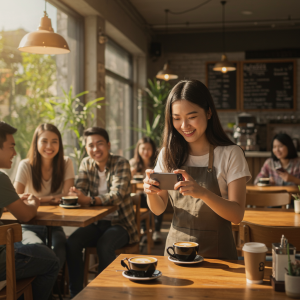Top Brand Influencers Driving Marketing Success

Influencer marketing has evolved from a trendy experiment to a cornerstone of modern brand strategy. Companies now allocate significant portions of their marketing budgets to partnerships with content creators who can authentically connect with target audiences. But with millions of influencers across platforms, identifying the right partners for your brand requires strategic thinking.
The most successful brand collaborations happen when there’s genuine alignment between an influencer’s values, audience, and content style with a company’s mission. These partnerships create authentic storytelling opportunities that resonate with consumers who increasingly seek genuine recommendations over traditional advertising.
Understanding Influencer Categories

Brand partnerships work best when there’s clear alignment between audience size, engagement rates, and campaign objectives. Different types of influencers serve different purposes in marketing strategies.
Mega-Influencers (1M+ followers)
Mega-influencers offer massive reach and are ideal for brand awareness campaigns. Their content often goes viral, creating significant exposure for partnering brands. However, engagement rates tend to be lower, and partnerships require substantial budgets.
Celebrity influencers like Dwayne “The Rock” Johnson, who has over 390 million Instagram followers, command premium rates but deliver unparalleled reach. His partnerships with brands like Under Armour and Teremana Tequila showcase how mega-influencers can drive both awareness and sales.
Macro-Influencers (100K-1M followers)
Macro-influencers strike a balance between reach and engagement. They typically maintain stronger connections with their audiences than mega-influencers while still offering substantial exposure.
Fashion influencer Chiara Ferragni has built lasting partnerships with luxury brands like Dior and Chanel. Her ability to create aspirational content that drives both engagement and conversions makes her valuable for high-end fashion brands.
Micro-Influencers (10K-100K followers)
Micro-influencers often deliver the highest return on investment due to their engaged, niche audiences. Their recommendations feel more personal and trustworthy to followers.
Home organization expert The Home Edit founders Clea Shearer and Joanna Teplin have leveraged their expertise to create successful partnerships with brands like The Container Store and Target, proving that specialized knowledge can be incredibly valuable for brands.
Top Lifestyle and Fashion Influencers
The lifestyle and fashion space remains one of the most lucrative for brand partnerships, with influencers who can seamlessly integrate products into aspirational content.
Emma Chamberlain has redefined lifestyle content with her relatable, authentic approach. Her partnerships with brands like Louis Vuitton and Chamberlain Coffee demonstrate how authenticity can drive both luxury and everyday brand success.
James Charles revolutionized beauty content creation and has worked with major cosmetics brands like Morphe and CoverGirl. His ability to create viral makeup content makes him valuable for brands seeking to reach younger demographics.
Hailey Bieber combines fashion, beauty, and lifestyle content to create compelling brand partnerships. Her collaborations with brands like Tarte Cosmetics and Versace showcase how multi-faceted influencers can serve various marketing objectives.
Technology and Business Influencers

Professional and technology influencers offer unique value for B2B brands and tech companies seeking to reach decision-makers and early adopters.
Marques Brownlee (MKBHD) has become the go-to tech reviewer for consumers and brands alike. His thorough, honest reviews can significantly impact product launches and brand perception in the technology space.
Gary Vaynerchuk combines business expertise with motivational content, making him valuable for both B2B software companies and consumer brands seeking to reach entrepreneurs and business leaders.
Casey Neistat’s filmmaking expertise and creative content style have attracted partnerships with brands like Samsung and Nike, proving that technical skills combined with storytelling ability create powerful marketing opportunities.
Fitness and Wellness Influencers
Health and wellness brands find tremendous success partnering with fitness influencers who can demonstrate product benefits through their lifestyle content.
Kayla Itsines built a fitness empire through social media and has partnered with brands like Adidas and Sweat to create authentic fitness content that drives both engagement and sales.
Joe Rogan’s podcast reaches millions of listeners, making him incredibly valuable for supplement brands, fitness companies, and wellness products. His long-form content allows for detailed product discussions that traditional social media posts cannot achieve.
Michelle Schroeder-Gardner combines personal finance expertise with lifestyle content, creating opportunities for financial services brands and lifestyle companies to reach audiences interested in financial wellness.
Food and Travel Influencers
Food and travel content creates natural partnership opportunities for restaurants, tourism boards, and hospitality brands.
Gordon Ramsay leverages his celebrity chef status across social media platforms to create engaging food content. His partnerships with kitchen equipment brands and food companies benefit from his credibility and expertise.
Molly Yeh combines cooking expertise with lifestyle content, creating authentic partnerships with food brands like Gold Medal Flour and KitchenAid that feel natural within her content.
Strategies for Choosing the Right Influencers
Successful influencer partnerships require careful selection based on audience alignment, content quality, and brand values compatibility.
Audience Analysis
Examine an influencer’s audience demographics, interests, and engagement patterns. Tools like Social Blade and HypeAuditor provide insights into follower authenticity and engagement quality.
Look beyond follower counts to understand audience behavior. An influencer with 50,000 highly engaged followers in your target demographic may deliver better results than someone with 500,000 less engaged followers.
Content Quality Assessment
Review an influencer’s content consistency, visual style, and storytelling ability. The best brand partnerships happen when an influencer’s existing content style aligns naturally with your brand message.
Evaluate how influencers have integrated previous brand partnerships. Seamless, authentic integration suggests they’ll represent your brand effectively.
Performance Metrics
Focus on engagement rates, comment quality, and conversion metrics rather than vanity metrics like follower counts. Micro-influencers often deliver higher engagement rates and more authentic audience connections.
Request case studies from previous brand partnerships, including reach, engagement, and conversion data when possible.
Building Successful Influencer Partnerships
Long-term partnerships often deliver better results than one-off campaigns. Influencers who genuinely use and believe in your products create more authentic content over time.
Creative Freedom
Allow influencers creative control over content creation while providing brand guidelines. The most successful partnerships leverage an influencer’s unique voice and style rather than forcing rigid brand messaging.
Provide product information, key messages, and brand values, then trust influencers to communicate these elements in ways that resonate with their audiences.
Performance Tracking
Establish clear metrics and tracking methods before campaigns begin. Use unique discount codes, affiliate links, or campaign-specific hashtags to measure direct attribution.
Track both quantitative metrics (reach, engagement, clicks) and qualitative feedback (comment sentiment, brand mention quality) to understand campaign effectiveness.
Emerging Trends in Influencer Marketing
The influencer marketing landscape continues evolving as platforms introduce new features and audience preferences shift.
Video-First Content
Short-form video content on platforms like TikTok and Instagram Reels drives higher engagement rates than static posts. Influencers who create compelling video content offer increased value for brand partnerships.
Authenticity Over Polish
Audiences increasingly prefer authentic, behind-the-scenes content over highly polished promotional material. Influencers who maintain genuine connections with their audiences deliver better results for brand partners.
Niche Expertise
Specialized knowledge in specific areas creates opportunities for deeper brand partnerships. Expert influencers can provide educational content that builds trust and drives conversions more effectively than general lifestyle content.
Maximizing Your Influencer Marketing Success
The future of brand marketing lies in authentic partnerships with content creators who genuinely connect with their audiences. Success comes from choosing influencers whose values align with your brand and whose audiences match your target demographics.
Start by identifying your campaign objectives, whether that’s brand awareness, lead generation, or direct sales. Then, research influencers whose content style, audience, and engagement metrics align with those goals.
Remember that the best influencer partnerships feel like natural extensions of both the brand and the creator’s existing content. When you find that alignment, you’ll create campaigns that resonate with audiences and deliver measurable results for your marketing objectives.
Meta data
Meta title
Meta description





